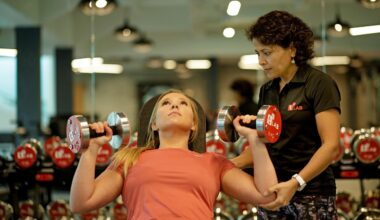Travel Safety Tips for Triathletes on the Go
Traveling for triathlons can be fun, but it is essential to prioritize your safety. Many triathletes overlook safety measures during races. Always research your destination beforehand. Familiarize yourself with the local area, including nearby medical facilities. Additionally, maintain awareness of local laws, customs, and transportation options. While exploring, keep your belongings close and secure, using anti-theft bags and pockets. Make a plan for race day logistics, ensuring you arrive early to acclimatize to the environment. Carry essential items, such as medications, and maintain a support network with fellow athletes ready to assist in emergencies. All these precautions can help reduce travel-related stress, leading to a better race experience.
Next, consider your accommodations. Opt for hotels that cater to triathletes or fitness enthusiasts. Many places offer special amenities, like bike storage and early breakfast. It’s paramount to read reviews about safety and service standards before booking. On arrival, check emergency exits and plan your route from the hotel to the race venue. Stay alert in unfamiliar areas, avoiding potentially risky neighborhoods. Utilize reputable transportation services, whether using taxis or rideshare apps. Carry an emergency contact card with local contacts, including the nearest hospital or clinic. This ensures that you can swiftly handle any issues. Following these essential practices contributes to enhanced travel safety.
Hydration is also critical for triathletes on the road. Dehydration can hinder your performance and increase health risks. Make sure to carry your water bottle during travel to stay hydrated. Invest in high-capacity hydration packs if you plan to travel extensively. When traveling to different climates, adjust your fluid intake as needed to accommodate heat and humidity changes, especially during races. If you experience issues drinking tap water, opt for bottled water from trusted sources. Additionally, consider electrolyte supplements to replenish lost minerals. This will keep energy levels high. Another good idea is to carry snacks for energy, focusing on clean nutrition that keeps you feeling good.
Transportation Considerations
When it comes to transportation, packing light is crucial. Make efficient use of your luggage space with versatile clothing and equipment. Carry a lightweight bike case for easy transport. If flying, check airline policies regarding bikes and equipment in advance to avoid surprises. Use a checklist to ensure all gear is packed, from bikes to wetsuits. Also, it helps to make arrangements for transporting your gear upon arrival; for instance, renting a local bike can save both time and effort. Understand the local public transport system for ease of movement. This will minimize the risk of delays while trying to locate race venues.
Besides transport, staying connected is equally important. Invest in a reliable mobile plan or international plan to keep your phone functional abroad. Use travel apps to manage your itinerary, accommodations, and communications. Keep emergency contacts saved in your phone and print a physical copy as a backup, ensuring it’s safe. Communicate your travel plans with family and friends back home, keeping them updated on your movements and race details. If a travel situation arises, it’s easier if more people are informed. These steps enhance your safety and give peace of mind, allowing you to focus on your performance and enjoy the experience.
Prioritize personal safety by keeping an eye on your belongings. Use hotel safes when possible. Furthermore, maintain a low profile to avoid attracting unwanted attention. Don’t display expensive gear or equipment when exploring unfamiliar streets. Instead, wear regular apparel to blend in with the locals. In social settings, be cautious with your phone; don’t leave it unattended in public areas. Keep your race day bag organized with crucial items easily accessible. A designated space for race bibs, nutrition, and electronic gear can help you transition smoothly from training to racing without anxiety, ensuring you are prepared when it counts the most.
Post-Race Travel Tips
After the race, consider your recovery strategy. Sometimes post-race activities can take a toll on your body. Hydrate and refuel with nutritious meals, especially protein-rich snacks to aid muscle recovery. Utilize compression gear to minimize swelling during travel. If you’re flying home, aim to book flights that allow for recovery time after the race. Stretch frequently during long journeys, taking short walks to keep blood flowing. Simultaneously, document your experiences; reflect on what worked well and what didn’t for future reference. Recording your insights can enhance your preparation for upcoming races, leading to continuous improvement.
Finally, maintaining mental wellness can be crucial while traveling for races. Traveling can lead to increased stress and anxiety, so practices like meditation or yoga can be beneficial. Arrange a short meditation session before your event to help focus and prepare mentally. Moreover, adopt a positive mindset. Focus on the joy of racing while connecting with fellow triathletes; camaraderie can offer incredible support. Take time to enjoy local culture and cuisine, which ultimately enriches your experience. Traveling for races should be fun! Relaxation can positively influence performance. Balance training, recovery, and enjoyment for a fantastic racing adventure ahead.


